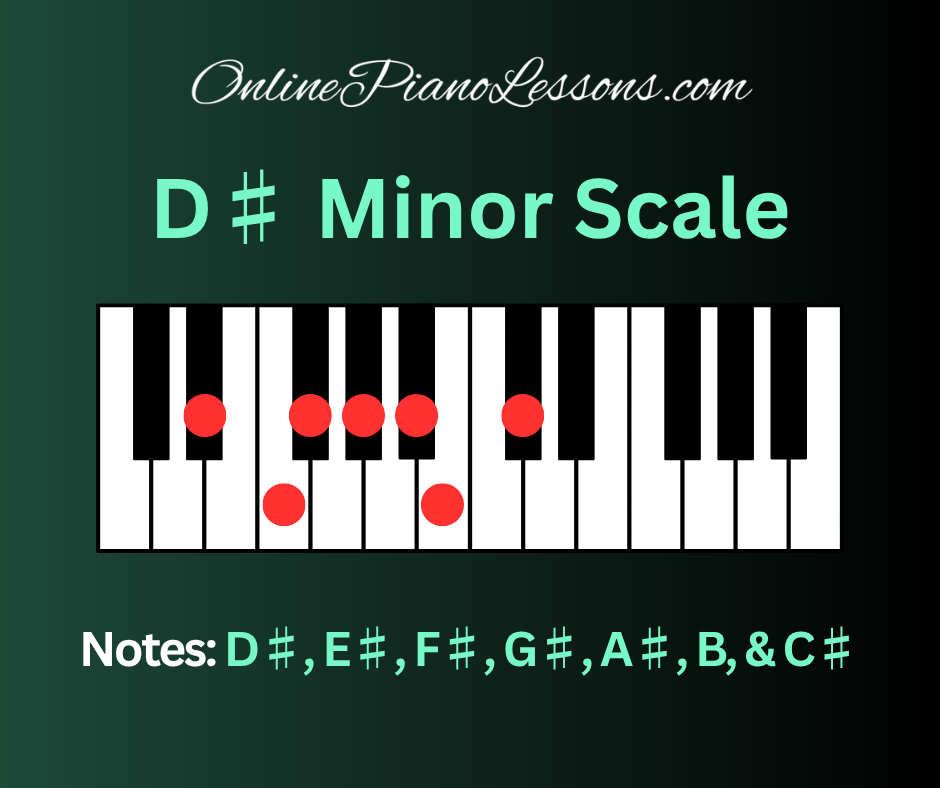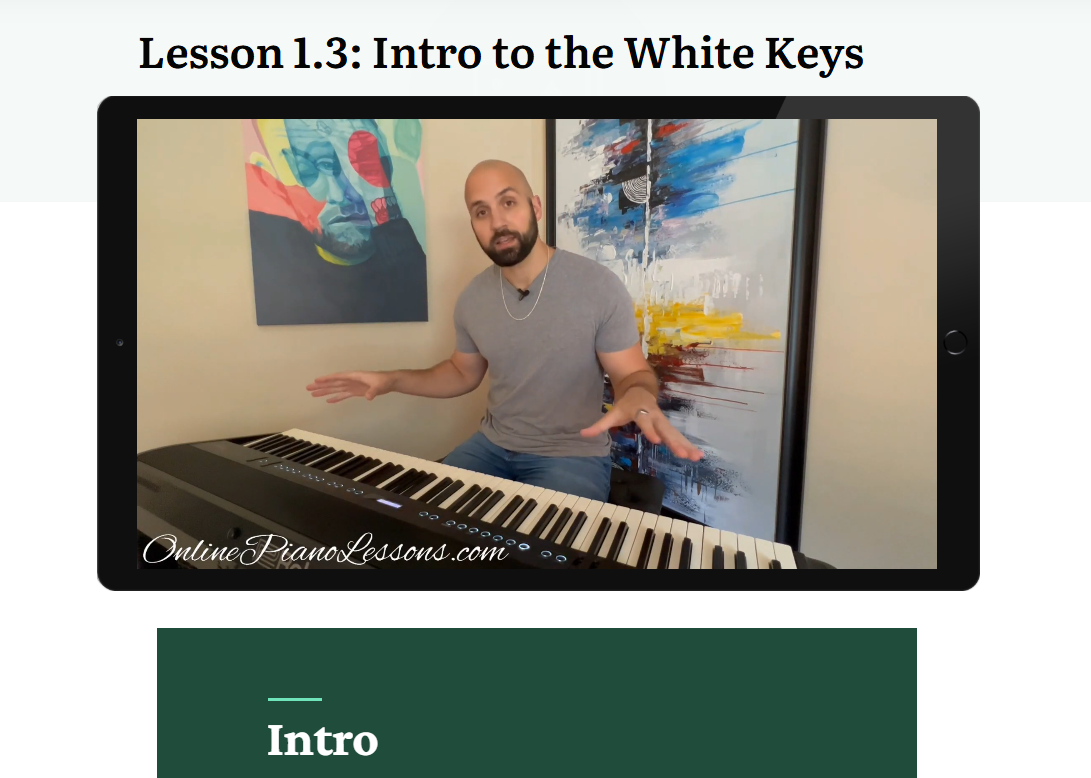
The D sharp minor scale is a fascinating and somewhat uncommon key that offers pianists a unique color palette. On the piano, the D# minor scale sounds dark, expressive, and slightly exotic compared to more familiar minor keys. This definitive guide explains what the D sharp minor scale (also written as the D# minor scale) is, how to find it on the keyboard, its natural/harmonic/melodic forms, common chords and progressions, fingerings, practice routines, tonal character, and practical tips for applying it in repertoire and improvisation. Throughout this guide you’ll see both the full-name D sharp minor scale and the shorthand D# minor scale used interchangeably—they mean the same thing.
What Is The D Sharp Minor Scale?
The D sharp minor scale is the minor scale with tonic D♯ (D#). The natural D# minor scale consists of the notes:
D♯ – E♯ – F♯ – G♯ – A♯ – B – C♯ – D♯
Because of notation conventions, you’ll often see E♯ introduced (the same pitch as F natural) in written scores for harmonic clarity. If you prefer enharmonic spellings, the D# minor scale is enharmonically equivalent to E♭ minor, but composers and theorists choose D# minor when the key relationships make it more logical (for instance when moving from B major or in certain chromatic contexts). On the piano, the D# minor scale uses a mix of black and white keys: D♯, F♯, G♯, A♯, and C♯ are black, while B and (sounding) F natural/E♯ appear as white keys when spelled enharmonically.
Because the D# minor scale is less common than its enharmonic E♭ minor, many beginners find it easier to think in E♭ minor for reading, but practicing the D# minor scale on piano is musically valuable because it trains your fingers and eye to handle sharps and more complex key signatures accurately.
Key Signature And Relationship To Other Keys
The D# minor scale’s key signature contains six sharps (F♯, C♯, G♯, D♯, A♯, E♯) when written in its theoretical form. It is the relative minor of F♯ major. Practically, many pieces written in a D-sharp tonal area will instead be notated in E♭ minor to avoid excessive double-sharps, but understanding the D# minor scale is important for theoretical work and for navigating some modern or highly chromatic repertoire on the piano.
Because the piano keyboard is tempered, playing the D# minor scale and the E♭ minor scale will sound identical in pitch; the difference is purely notational and contextual.
Natural, Harmonic, And Melodic Forms
As with other minor keys, the D# minor scale has three important forms used in composition and piano practice:
- Natural D# Minor Scale (Aeolian): D♯ – E♯ – F♯ – G♯ – A♯ – B – C♯ – D♯. This is the raw minor sound and is often used for modal or folk-like passages.
- Harmonic D# Minor Scale: D♯ – E♯ – F♯ – G♯ – A♯ – B – C𝄪 (C double-sharp) – D♯. The harmonic form raises the seventh degree to provide a strong leading tone (C𝄪 is enharmonically D), which creates a stronger pull back to D♯. On the piano you will likely play D natural (sounding) where notated as C𝄪, and the notation can be awkward; many composers instead write in E♭ minor for readability.
- Melodic D# Minor Scale:
-
-
Ascending: D♯ – E♯ – F♯ – G♯ – A♯ – B♯ – C𝄪 – D♯ (raise 6th and 7th).
-
Descending: D♯ – C♯ – B – A♯ – G♯ – F♯ – E♯ – D♯ (reverts typically to natural minor on the way down).
The melodic form smooths melodic motion when ascending and returns to the darker natural minor when descending.
-
When practicing the D# minor scale on piano, understand which form the music requires and practice the relevant form slowly and evenly.
Fingerings For The D# Minor Scale On Piano
Because of its many sharps, the D# minor scale has specific fingering choices that help you maintain a comfortable hand position. Here are suggested fingerings that work well for most hands.
Right Hand (Ascending) — Natural / Melodic / Harmonic
1 (D♯) – 2 (E♯) – 3 (F♯) – 1 (G♯) – 2 (A♯) – 3 (B or B♯) – 4 (C♯ or C𝄪) – 5 (D♯)
Right Hand (Descending)
5 – 4 – 3 – 2 – 1 – 3 – 2 – 1
Left Hand (Ascending)
5 (D♯) – 4 (E♯) – 3 (F♯) – 2 (G♯) – 1 (A♯) – 3 (B or B♯) – 2 (C♯) – 1 (D♯)
Left Hand (Descending)
1 – 2 – 3 – 1 – 2 – 3 – 4 – 5
Thumb-under and thumb-over crossings are placed to let the thumb land on white or black keys as fluidly as possible. Because notation may use E♯ and C𝄪, focus more on sounding pitches and comfortable hand shapes than on the printed accidentals during initial practice.
Common Chords And Progressions In D# Minor
Knowledge of chords built from the D# minor scale helps you harmonize and improvise on the piano. In the natural form, the diatonic triads are:
- i: D♯ minor (D♯–F♯–A♯)
- ii°: E♯ diminished (E♯–G♯–B) — often written enharmonically as F diminished.
- III: F♯ major (F♯–A♯–C♯)
- iv: G♯ minor (G♯–B–D♯)
- v: A♯ minor (A♯–C♯–E♯) — often altered to A♯ major (with E𝄪) for stronger dominant function.
- VI: B major (B–D♯–F♯)
- VII: C♯ major (C♯–E♯–G♯)
Common piano progressions in the D# minor area include i – VI – III – VII (D♯m – B – F♯ – C♯) and i – iv – V (with V often altered to major for a stronger cadence). On piano, these progressions yield dramatic, melancholic textures well suited to expressive playing.
Sound, Character, And Practical Uses
The D# minor scale on piano is often perceived as dark, poignant, and introspective. It works beautifully in music that wants to blend melancholy with moments of brightness (using melodic/harmonic alterations). Because of notation complexity, composers sometimes avoid D# minor in favor of E♭ minor, but pianists should practice D# minor scales and arpeggios to ensure facility in all chromatic contexts and to be prepared for modern repertoire that uses sharp-centric notation.
D# minor is effective for dramatic piano prelude ideas, cinematic passages, and expressive improvisation. Its black-key layout offers ergonomic advantages for particular fingerings and voicings.
Practice Routine And Exercises
- Scale Practice: Practice the natural, harmonic, and melodic D# minor scale in two octaves slowly with metronome, then increase tempo.
- Arpeggios: Play D♯ minor arpeggios (root, first, second inversions) across the keyboard.
- Chord Progressions: Loop i–VI–III–VII and experiment with voicings and left-hand patterns.
- Sight-Reading: Read short pieces in D# minor or enharmonic E♭ minor to build fluency.
- Transposition: Transpose a simple melody into D# minor to internalize its sound.
Short, daily practice of 10–20 minute focused drills will make the D# minor scale on piano feel natural and expressive.
FAQ
What notes are in the D# minor scale?
In theoretical notation the natural D# minor scale is D♯, E♯, F♯, G♯, A♯, B, C♯, D♯. Harmonic and melodic forms raise the seventh (and sixth when ascending).
Is D# minor the same as E♭ minor?
Sonically yes (enharmonically identical on the piano). Notationally they are different; E♭ minor is often preferred for readability, while D# minor is used in certain theoretical or compositional contexts.
How many sharps are in the D# minor key signature?
The theoretical D# minor key signature uses six sharps (F♯, C♯, G♯, D♯, A♯, E♯).
Is D# minor hard to play on piano?
The D# minor scale can feel awkward at first because of its accidentals, but many pianists find its black-key pattern comfortable. Regular practice makes it as accessible as any other minor scale.
Are there famous pieces in D# minor?
True D# minor notation is rare in classical repertory (you’ll more often see E♭ minor), but the tonal area and sound of D#/E♭ minor appear frequently in romantic and modern music. Pianists should be prepared to encounter both notations.





 Hi, I'm Thomas, Pianist Composer,
Hi, I'm Thomas, Pianist Composer,  I love playing piano, creating new melodies and songs, and further developing my online piano course and making updates/additions to my site OnlinePianoLessons.com!
I love playing piano, creating new melodies and songs, and further developing my online piano course and making updates/additions to my site OnlinePianoLessons.com!  Now that is what I call fun!
Now that is what I call fun!





